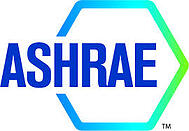There are many risks associated with unmonitored humidity levels in buildings. The most significant of which is the health risks posed to the building’s occupants. Sick Building Syndrome can severely affect occupants’ comfort and productivity, but more alarming are some of the respiratory and other health ailments which can arise from unmonitored humidity levels.
Sick Building Syndrome
Maintaining a building environment within a range of 30-60% relative humidity (RH) provides worker comfort, productivity, reduces health risks and protects products and furnishings. Buildings that do not have adequate HVAC systems or effective humidity sensors to properly control them, suffer from a condition known as “sick building syndrome” (SBS).
SBS refers to acute health and comfort issues that building occupants suffer from after spending an extended period of time within a building environment. The symptoms are fairly consistent with the consequences of high and low relative humidity mentioned in part 1—eye, nose and throat irritation, headaches, a dry cough, itchy skin, dizziness, fatigue, and difficulty concentrating.
 SBS can be caused by a number of interacting factors, beginning with inadequate ventilation in which the HVAC system does not effectively distribute air to people in the building. The American Society of Heating, Refrigerating and Air-Conditioning Engineers (ASHRAE) recommends a minimum of 15 cubic feet per minute (CFM) of outdoor air per person, and 20 CFM per person in office spaces. When the HVAC system consistently delivers below this level, occupants begin to feel the effects of SBS.
SBS can be caused by a number of interacting factors, beginning with inadequate ventilation in which the HVAC system does not effectively distribute air to people in the building. The American Society of Heating, Refrigerating and Air-Conditioning Engineers (ASHRAE) recommends a minimum of 15 cubic feet per minute (CFM) of outdoor air per person, and 20 CFM per person in office spaces. When the HVAC system consistently delivers below this level, occupants begin to feel the effects of SBS.
Outdoor air entering the building can also contribute to SBS. If an intake air vent is poorly located, supply air could come from restroom or kitchen exhausts, plumbing vented air, dumpster odors and even combustion from nearby parking garages or traffic.
Indoor chemical contaminants can also contribute to SBS. Volatile organic compounds, including formaldehyde, can be emitted from carpeting, upholstery, adhesives, copy machines, pesticides, and cleaning agents.
Additionally, biological contaminants—including molds, bacteria, pollen and viruses—can cause SBS. These contaminants breed in stagnant water that has accumulated in ducts, humidifiers, drain pans, or where water has collected on ceiling tiles and insulation. Mold is not usually a problem indoors unless mold spores land on a wet spot, such as in a duct, and begin growing. In that case, mold can trigger allergic reactions and asthma attacks, as well as irritate eyes, skin, nose, throat, and lungs, regardless of whether individuals are allergic or not.


